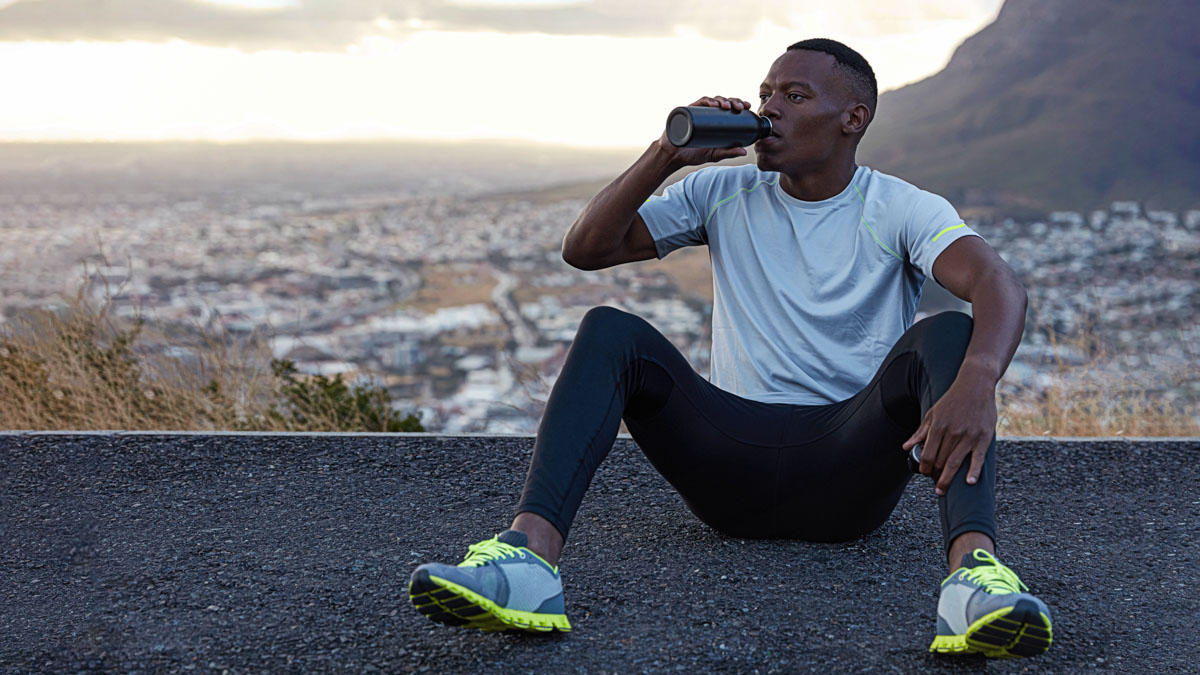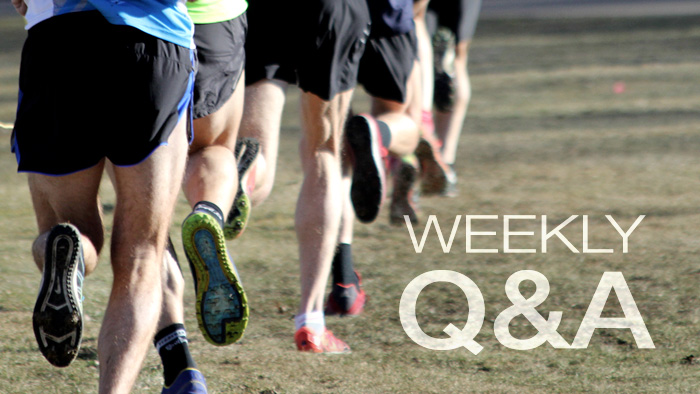When training for a marathon, your physical and mental preparation is probably solely fixed on getting you to the start line and then doing your best over the next 26.2 miles. But as important as this is, it’s all too easy to cross the finish line, collapse in a heap, and have no plan for recovering. As a result, it will take your body and brain longer to restore itself and repair the damage from those thousands of foot strikes. In this article, I’ll share some tips that will hopefully help you go into your race with not only a pacing strategy for the actual event, but also a blueprint for what comes next.
What to Eat and Drink After a Marathon
Back when I interviewed Stacy Sims for my book Waterman 2.0, she told me that post-race hydration in any sport should be divided into two categories: the two-hour window right after you cross the finish line followed by the rest of the evening and the next day. For the former, you need to replenish fluids and electrolytes depleted during the marathon. Sure, sports drinks, goos, and gels are one way to do this, but beware products that are high in sugar, as this can upset your stomach. Instead, go for something with a lower glycemic index rating, like Momentous Hydrate.
As sodium is the mineral that is diminished most rapidly during a long race, you’re going to need to put some more salt into your post-race meal than you might normally consume. Try salting watery fruit like the aptly-named watermelon and include plenty of vegetables, as these are mostly water. Also, ensure that you consume at least 30 grams of complete protein to help kickstart the repair of muscles that have been battered during your marathon. You’ll have depleted much of your glycogen stores, so add in some whole grain pasta (sprouted options will digest more like a vegetable), brown rice, or whole-grain bread. And for your pre-bedtime snack, oats made with whole milk, berries, coconut, pumpkin seeds, and your nut of choice will provide a nice mix of all your macros plus the minerals you need to replenish, like magnesium, selenium, copper, and zinc.
Prioritize Breathing and Sleep After Your Marathon
Right after you break the tape, you might be panting from an all-out sprint finish (assuming you had something left in the tank after gutting it out through all those miles!). But as soon as you can, you need to get back to calmer breathing to downshift yourself from a sympathetic (fight, flight, or freeze) state into a parasympathetic (rest and digest) one. The easiest way to do this is to breathe through your nose. Then, try to make your inhales quieter and extend your exhales to seven seconds or longer, which researchers like Patrick McKeown and Kasper van der Meulen have found to increase heart rate variability and encourage recovery.
To enhance your rest, consider lying down in bed a few minutes earlier than usual to build in a little additional breathing. Try a pattern that Brian Mackenzie shared with me a few years ago when we were teaming up with Dr. Andy Galpin on Unplugged. Inhale through your nose for five seconds, hold your breath for 15 seconds, and then do a nasal exhale for 10 seconds (this is known as a 1:3:2 apnea protocol). You’ll be amazed that in just three to five minutes, your heart rate will have dropped noticeably, and you’ll probably be yawning. Now you’re set up for high-quality sleep. Be sure to put a glass of mineral water mixed with a pinch of sea salt beside your bed in case you wake up feeling dehydrated, and block out sound and light with earplugs and a sleep mask. Also, set the thermostat to 65 degrees or less, as this is optimal for a good night’s rest.
How to Stretch and Exercise After a Marathon
When you run more than 20 miles, your body is bound to get sore and tight, no matter how thoroughly you prepared beforehand. Everything below your waist — including your feet, ankles, calves, hamstrings, quads, and hip flexors — is likely to be wasted for at least a few days. But while it might seem like you should just ice the heck out of your lower limbs and rest up, this will in fact delay your recovery. Remember, you’re not injured (and that Gabe Mirkin, the guy who invented the RICE protocol in 1978, has since said that ice and rest actually interfere with injury recovery). While before your marathon you should’ve favored dynamic warmup exercises, afterward is a perfect time for static stretches that you can hold for 30 seconds, a minute, or more to help relieve excess tension.
If you’re reading this before you head to your event, try to remember to pack a roller. This will allow you to smash the big muscles — like your calves, hamstrings, and quads — that probably started screaming midway through the marathon and then stiffened up after you were done running. A softer implement like Jill Miller’s Yoga Tune Up Ball is perfect for rubbing on tender areas like the soles of your feet and Achilles tendons.
When possible, try to pair mobility with some low-intensity movement. If you’re staying in the city where your event is after the race, skip the Uber or Lyft and take a walk to explore new sights and sounds. There’s no better way to do this than on foot. The morning after the marathon, grab a cup of coffee or tea and take another walk or a light jog. Or, should you be staying somewhere by the sea, rent a boogie board and get out in the waves. If you’re with friends or family, have a frisbee handy to throw while enjoying the relaxing sensation of sand underfoot.
Had to drive home right after your race? Then make sure you take plenty of breaks to stretch and add in some bodyweight movements like squats and lunges. Circle your arms back and forth and rotate from the waist up. Or, if you flew, try to get a bath, sauna, or hot tub session in when you arrive home. It will give you similar cardiovascular benefits to aerobic training but without the mechanical load. Plus, your muscles will thank you after.
The next few days, be smart with your training. Sure, you want to prove that you’re feeling right as rain and might even have another race coming up, but realize the amount of stress that you just subjected yourself to. Even for seasoned pros, a marathon is no joke. Reduce the intensity, density, and overall volume of your road, track, and trail work for a while. Also try adding in some fun cross-training, like shooting hoops with your kids, playing flag football with your buddies, or finally agreeing to play in your brother’s co-ed softball league. This will feel like the reward you so richly deserve and will leave you feeling fresher when it’s time to dial up your training again.








